Stress Incontinence
Urge Incontinence
Overflow Incontinence
Functional Incontinence
Mixed Incontinence
Absorbent Products
Surgical Products
Medications
Neuromodulation Devices
Catheters
Hospitals
Nursing Homes
Home Care Settings
Ambulatory Surgical Centers
Female
Male
North America
Europe
South America
Asia Pacific
Middle East and Africa
North America Outlook (USD Billion, 2019-2035)
North America Urinary Incontinence Market by Type
Stress Incontinence
Urge Incontinence
Overflow Incontinence
Functional Incontinence
Mixed Incontinence
North America Urinary Incontinence Market by Product Type
Absorbent Products
Surgical Products
Medications
Neuromodulation Devices
Catheters
North America Urinary Incontinence Market by End User Type
Hospitals
Nursing Homes
Home Care Settings
Ambulatory Surgical Centers
North America Urinary Incontinence Market by Gender Type
Female
Male
North America Urinary Incontinence Market by Regional Type
US
Canada
US Outlook (USD Billion, 2019-2035)
US Urinary Incontinence Market by Type
Stress Incontinence
Urge Incontinence
Overflow Incontinence
Functional Incontinence
Mixed Incontinence
US Urinary Incontinence Market by Product Type
Absorbent Products
Surgical Products
Medications
Neuromodulation Devices
Catheters
US Urinary Incontinence Market by End User Type
Hospitals
Nursing Homes
Home Care Settings
Ambulatory Surgical Centers
US Urinary Incontinence Market by Gender Type
Female
Male
CANADA Outlook (USD Billion, 2019-2035)
CANADA Urinary Incontinence Market by Type
Stress Incontinence
Urge Incontinence
Overflow Incontinence
Functional Incontinence
Mixed Incontinence
CANADA Urinary Incontinence Market by Product Type
Absorbent Products
Surgical Products
Medications
Neuromodulation Devices
Catheters
CANADA Urinary Incontinence Market by End User Type
Hospitals
Nursing Homes
Home Care Settings
Ambulatory Surgical Centers
CANADA Urinary Incontinence Market by Gender Type
Female
Male
Europe Outlook (USD Billion, 2019-2035)
Europe Urinary Incontinence Market by Type
Stress Incontinence
Urge Incontinence
Overflow Incontinence
Functional Incontinence
Mixed Incontinence
Europe Urinary Incontinence Market by Product Type
Absorbent Products
Surgical Products
Medications
Neuromodulation Devices
Catheters
Europe Urinary Incontinence Market by End User Type
Hospitals
Nursing Homes
Home Care Settings
Ambulatory Surgical Centers
Europe Urinary Incontinence Market by Gender Type
Female
Male
Europe Urinary Incontinence Market by Regional Type
Germany
UK
France
Russia
Italy
Spain
Rest of Europe
GERMANY Outlook (USD Billion, 2019-2035)
GERMANY Urinary Incontinence Market by Type
Stress Incontinence
Urge Incontinence
Overflow Incontinence
Functional Incontinence
Mixed Incontinence
GERMANY Urinary Incontinence Market by Product Type
Absorbent Products
Surgical Products
Medications
Neuromodulation Devices
Catheters
GERMANY Urinary Incontinence Market by End User Type
Hospitals
Nursing Homes
Home Care Settings
Ambulatory Surgical Centers
GERMANY Urinary Incontinence Market by Gender Type
Female
Male
UK Outlook (USD Billion, 2019-2035)
UK Urinary Incontinence Market by Type
Stress Incontinence
Urge Incontinence
Overflow Incontinence
Functional Incontinence
Mixed Incontinence
UK Urinary Incontinence Market by Product Type
Absorbent Products
Surgical Products
Medications
Neuromodulation Devices
Catheters
UK Urinary Incontinence Market by End User Type
Hospitals
Nursing Homes
Home Care Settings
Ambulatory Surgical Centers
UK Urinary Incontinence Market by Gender Type
Female
Male
FRANCE Outlook (USD Billion, 2019-2035)
FRANCE Urinary Incontinence Market by Type
Stress Incontinence
Urge Incontinence
Overflow Incontinence
Functional Incontinence
Mixed Incontinence
FRANCE Urinary Incontinence Market by Product Type
Absorbent Products
Surgical Products
Medications
Neuromodulation Devices
Catheters
FRANCE Urinary Incontinence Market by End User Type
Hospitals
Nursing Homes
Home Care Settings
Ambulatory Surgical Centers
FRANCE Urinary Incontinence Market by Gender Type
Female
Male
RUSSIA Outlook (USD Billion, 2019-2035)
RUSSIA Urinary Incontinence Market by Type
Stress Incontinence
Urge Incontinence
Overflow Incontinence
Functional Incontinence
Mixed Incontinence
RUSSIA Urinary Incontinence Market by Product Type
Absorbent Products
Surgical Products
Medications
Neuromodulation Devices
Catheters
RUSSIA Urinary Incontinence Market by End User Type
Hospitals
Nursing Homes
Home Care Settings
Ambulatory Surgical Centers
RUSSIA Urinary Incontinence Market by Gender Type
Female
Male
ITALY Outlook (USD Billion, 2019-2035)
ITALY Urinary Incontinence Market by Type
Stress Incontinence
Urge Incontinence
Overflow Incontinence
Functional Incontinence
Mixed Incontinence
ITALY Urinary Incontinence Market by Product Type
Absorbent Products
Surgical Products
Medications
Neuromodulation Devices
Catheters
ITALY Urinary Incontinence Market by End User Type
Hospitals
Nursing Homes
Home Care Settings
Ambulatory Surgical Centers
ITALY Urinary Incontinence Market by Gender Type
Female
Male
SPAIN Outlook (USD Billion, 2019-2035)
SPAIN Urinary Incontinence Market by Type
Stress Incontinence
Urge Incontinence
Overflow Incontinence
Functional Incontinence
Mixed Incontinence
SPAIN Urinary Incontinence Market by Product Type
Absorbent Products
Surgical Products
Medications
Neuromodulation Devices
Catheters
SPAIN Urinary Incontinence Market by End User Type
Hospitals
Nursing Homes
Home Care Settings
Ambulatory Surgical Centers
SPAIN Urinary Incontinence Market by Gender Type
Female
Male
REST OF EUROPE Outlook (USD Billion, 2019-2035)
REST OF EUROPE Urinary Incontinence Market by Type
Stress Incontinence
Urge Incontinence
Overflow Incontinence
Functional Incontinence
Mixed Incontinence
REST OF EUROPE Urinary Incontinence Market by Product Type
Absorbent Products
Surgical Products
Medications
Neuromodulation Devices
Catheters
REST OF EUROPE Urinary Incontinence Market by End User Type
Hospitals
Nursing Homes
Home Care Settings
Ambulatory Surgical Centers
REST OF EUROPE Urinary Incontinence Market by Gender Type
Female
Male
APAC Outlook (USD Billion, 2019-2035)
APAC Urinary Incontinence Market by Type
Stress Incontinence
Urge Incontinence
Overflow Incontinence
Functional Incontinence
Mixed Incontinence
APAC Urinary Incontinence Market by Product Type
Absorbent Products
Surgical Products
Medications
Neuromodulation Devices
Catheters
APAC Urinary Incontinence Market by End User Type
Hospitals
Nursing Homes
Home Care Settings
Ambulatory Surgical Centers
APAC Urinary Incontinence Market by Gender Type
Female
Male
APAC Urinary Incontinence Market by Regional Type
China
India
Japan
South Korea
Malaysia
Thailand
Indonesia
Rest of APAC
CHINA Outlook (USD Billion, 2019-2035)
CHINA Urinary Incontinence Market by Type
Stress Incontinence
Urge Incontinence
Overflow Incontinence
Functional Incontinence
Mixed Incontinence
CHINA Urinary Incontinence Market by Product Type
Absorbent Products
Surgical Products
Medications
Neuromodulation Devices
Catheters
CHINA Urinary Incontinence Market by End User Type
Hospitals
Nursing Homes
Home Care Settings
Ambulatory Surgical Centers
CHINA Urinary Incontinence Market by Gender Type
Female
Male
INDIA Outlook (USD Billion, 2019-2035)
INDIA Urinary Incontinence Market by Type
Stress Incontinence
Urge Incontinence
Overflow Incontinence
Functional Incontinence
Mixed Incontinence
INDIA Urinary Incontinence Market by Product Type
Absorbent Products
Surgical Products
Medications
Neuromodulation Devices
Catheters
INDIA Urinary Incontinence Market by End User Type
Hospitals
Nursing Homes
Home Care Settings
Ambulatory Surgical Centers
INDIA Urinary Incontinence Market by Gender Type
Female
Male
JAPAN Outlook (USD Billion, 2019-2035)
JAPAN Urinary Incontinence Market by Type
Stress Incontinence
Urge Incontinence
Overflow Incontinence
Functional Incontinence
Mixed Incontinence
JAPAN Urinary Incontinence Market by Product Type
Absorbent Products
Surgical Products
Medications
Neuromodulation Devices
Catheters
JAPAN Urinary Incontinence Market by End User Type
Hospitals
Nursing Homes
Home Care Settings
Ambulatory Surgical Centers
JAPAN Urinary Incontinence Market by Gender Type
Female
Male
SOUTH KOREA Outlook (USD Billion, 2019-2035)
SOUTH KOREA Urinary Incontinence Market by Type
Stress Incontinence
Urge Incontinence
Overflow Incontinence
Functional Incontinence
Mixed Incontinence
SOUTH KOREA Urinary Incontinence Market by Product Type
Absorbent Products
Surgical Products
Medications
Neuromodulation Devices
Catheters
SOUTH KOREA Urinary Incontinence Market by End User Type
Hospitals
Nursing Homes
Home Care Settings
Ambulatory Surgical Centers
SOUTH KOREA Urinary Incontinence Market by Gender Type
Female
Male
MALAYSIA Outlook (USD Billion, 2019-2035)
MALAYSIA Urinary Incontinence Market by Type
Stress Incontinence
Urge Incontinence
Overflow Incontinence
Functional Incontinence
Mixed Incontinence
MALAYSIA Urinary Incontinence Market by Product Type
Absorbent Products
Surgical Products
Medications
Neuromodulation Devices
Catheters
MALAYSIA Urinary Incontinence Market by End User Type
Hospitals
Nursing Homes
Home Care Settings
Ambulatory Surgical Centers
MALAYSIA Urinary Incontinence Market by Gender Type
Female
Male
THAILAND Outlook (USD Billion, 2019-2035)
THAILAND Urinary Incontinence Market by Type
Stress Incontinence
Urge Incontinence
Overflow Incontinence
Functional Incontinence
Mixed Incontinence
THAILAND Urinary Incontinence Market by Product Type
Absorbent Products
Surgical Products
Medications
Neuromodulation Devices
Catheters
THAILAND Urinary Incontinence Market by End User Type
Hospitals
Nursing Homes
Home Care Settings
Ambulatory Surgical Centers
THAILAND Urinary Incontinence Market by Gender Type
Female
Male
INDONESIA Outlook (USD Billion, 2019-2035)
INDONESIA Urinary Incontinence Market by Type
Stress Incontinence
Urge Incontinence
Overflow Incontinence
Functional Incontinence
Mixed Incontinence
INDONESIA Urinary Incontinence Market by Product Type
Absorbent Products
Surgical Products
Medications
Neuromodulation Devices
Catheters
INDONESIA Urinary Incontinence Market by End User Type
Hospitals
Nursing Homes
Home Care Settings
Ambulatory Surgical Centers
INDONESIA Urinary Incontinence Market by Gender Type
Female
Male
REST OF APAC Outlook (USD Billion, 2019-2035)
REST OF APAC Urinary Incontinence Market by Type
Stress Incontinence
Urge Incontinence
Overflow Incontinence
Functional Incontinence
Mixed Incontinence
REST OF APAC Urinary Incontinence Market by Product Type
Absorbent Products
Surgical Products
Medications
Neuromodulation Devices
Catheters
REST OF APAC Urinary Incontinence Market by End User Type
Hospitals
Nursing Homes
Home Care Settings
Ambulatory Surgical Centers
REST OF APAC Urinary Incontinence Market by Gender Type
Female
Male
South America Outlook (USD Billion, 2019-2035)
South America Urinary Incontinence Market by Type
Stress Incontinence
Urge Incontinence
Overflow Incontinence
Functional Incontinence
Mixed Incontinence
South America Urinary Incontinence Market by Product Type
Absorbent Products
Surgical Products
Medications
Neuromodulation Devices
Catheters
South America Urinary Incontinence Market by End User Type
Hospitals
Nursing Homes
Home Care Settings
Ambulatory Surgical Centers
South America Urinary Incontinence Market by Gender Type
Female
Male
South America Urinary Incontinence Market by Regional Type
Brazil
Mexico
Argentina
Rest of South America
BRAZIL Outlook (USD Billion, 2019-2035)
BRAZIL Urinary Incontinence Market by Type
Stress Incontinence
Urge Incontinence
Overflow Incontinence
Functional Incontinence
Mixed Incontinence
BRAZIL Urinary Incontinence Market by Product Type
Absorbent Products
Surgical Products
Medications
Neuromodulation Devices
Catheters
BRAZIL Urinary Incontinence Market by End User Type
Hospitals
Nursing Homes
Home Care Settings
Ambulatory Surgical Centers
BRAZIL Urinary Incontinence Market by Gender Type
Female
Male
MEXICO Outlook (USD Billion, 2019-2035)
MEXICO Urinary Incontinence Market by Type
Stress Incontinence
Urge Incontinence
Overflow Incontinence
Functional Incontinence
Mixed Incontinence
MEXICO Urinary Incontinence Market by Product Type
Absorbent Products
Surgical Products
Medications
Neuromodulation Devices
Catheters
MEXICO Urinary Incontinence Market by End User Type
Hospitals
Nursing Homes
Home Care Settings
Ambulatory Surgical Centers
MEXICO Urinary Incontinence Market by Gender Type
Female
Male
ARGENTINA Outlook (USD Billion, 2019-2035)
ARGENTINA Urinary Incontinence Market by Type
Stress Incontinence
Urge Incontinence
Overflow Incontinence
Functional Incontinence
Mixed Incontinence
ARGENTINA Urinary Incontinence Market by Product Type
Absorbent Products
Surgical Products
Medications
Neuromodulation Devices
Catheters
ARGENTINA Urinary Incontinence Market by End User Type
Hospitals
Nursing Homes
Home Care Settings
Ambulatory Surgical Centers
ARGENTINA Urinary Incontinence Market by Gender Type
Female
Male
REST OF SOUTH AMERICA Outlook (USD Billion, 2019-2035)
REST OF SOUTH AMERICA Urinary Incontinence Market by Type
Stress Incontinence
Urge Incontinence
Overflow Incontinence
Functional Incontinence
Mixed Incontinence
REST OF SOUTH AMERICA Urinary Incontinence Market by Product Type
Absorbent Products
Surgical Products
Medications
Neuromodulation Devices
Catheters
REST OF SOUTH AMERICA Urinary Incontinence Market by End User Type
Hospitals
Nursing Homes
Home Care Settings
Ambulatory Surgical Centers
REST OF SOUTH AMERICA Urinary Incontinence Market by Gender Type
Female
Male
MEA Outlook (USD Billion, 2019-2035)
MEA Urinary Incontinence Market by Type
Stress Incontinence
Urge Incontinence
Overflow Incontinence
Functional Incontinence
Mixed Incontinence
MEA Urinary Incontinence Market by Product Type
Absorbent Products
Surgical Products
Medications
Neuromodulation Devices
Catheters
MEA Urinary Incontinence Market by End User Type
Hospitals
Nursing Homes
Home Care Settings
Ambulatory Surgical Centers
MEA Urinary Incontinence Market by Gender Type
Female
Male
MEA Urinary Incontinence Market by Regional Type
GCC Countries
South Africa
Rest of MEA
GCC COUNTRIES Outlook (USD Billion, 2019-2035)
GCC COUNTRIES Urinary Incontinence Market by Type
Stress Incontinence
Urge Incontinence
Overflow Incontinence
Functional Incontinence
Mixed Incontinence
GCC COUNTRIES Urinary Incontinence Market by Product Type
Absorbent Products
Surgical Products
Medications
Neuromodulation Devices
Catheters
GCC COUNTRIES Urinary Incontinence Market by End User Type
Hospitals
Nursing Homes
Home Care Settings
Ambulatory Surgical Centers
GCC COUNTRIES Urinary Incontinence Market by Gender Type
Female
Male
SOUTH AFRICA Outlook (USD Billion, 2019-2035)
SOUTH AFRICA Urinary Incontinence Market by Type
Stress Incontinence
Urge Incontinence
Overflow Incontinence
Functional Incontinence
Mixed Incontinence
SOUTH AFRICA Urinary Incontinence Market by Product Type
Absorbent Products
Surgical Products
Medications
Neuromodulation Devices
Catheters
SOUTH AFRICA Urinary Incontinence Market by End User Type
Hospitals
Nursing Homes
Home Care Settings
Ambulatory Surgical Centers
SOUTH AFRICA Urinary Incontinence Market by Gender Type
Female
Male
REST OF MEA Outlook (USD Billion, 2019-2035)
REST OF MEA Urinary Incontinence Market by Type
Stress Incontinence
Urge Incontinence
Overflow Incontinence
Functional Incontinence
Mixed Incontinence
REST OF MEA Urinary Incontinence Market by Product Type
Absorbent Products
Surgical Products
Medications
Neuromodulation Devices
Catheters
REST OF MEA Urinary Incontinence Market by End User Type
Hospitals
Nursing Homes
Home Care Settings
Ambulatory Surgical Centers
REST OF MEA Urinary Incontinence Market by Gender Type
Female
Male
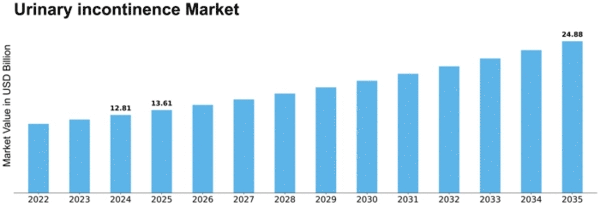

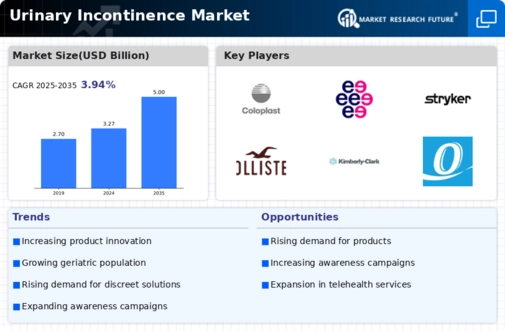
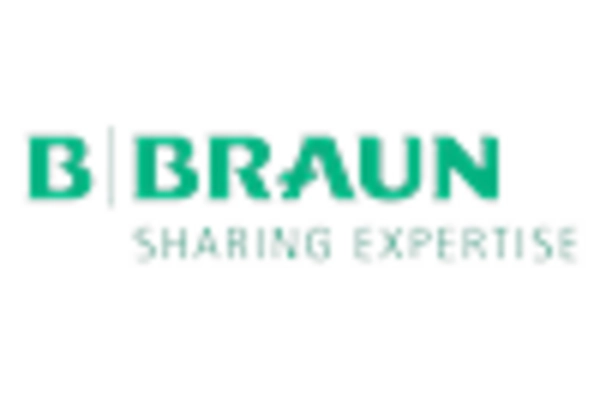
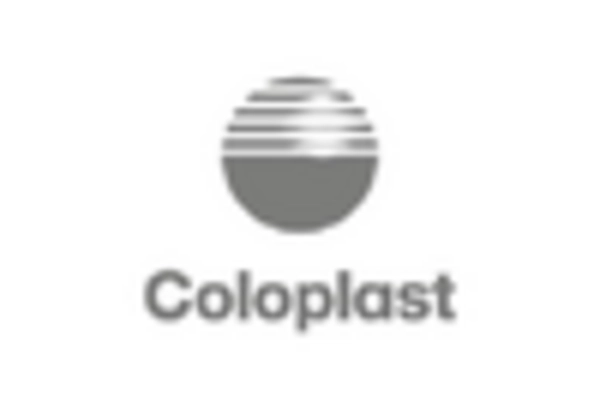
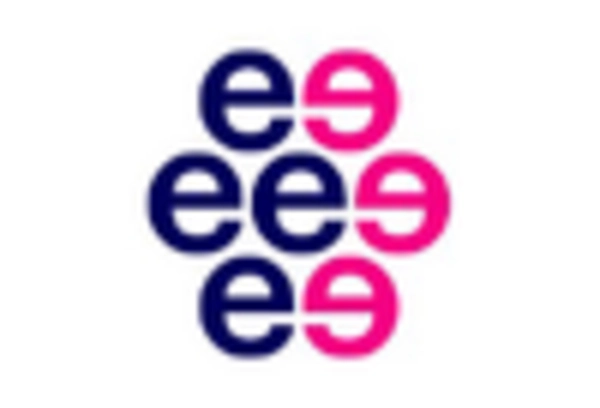
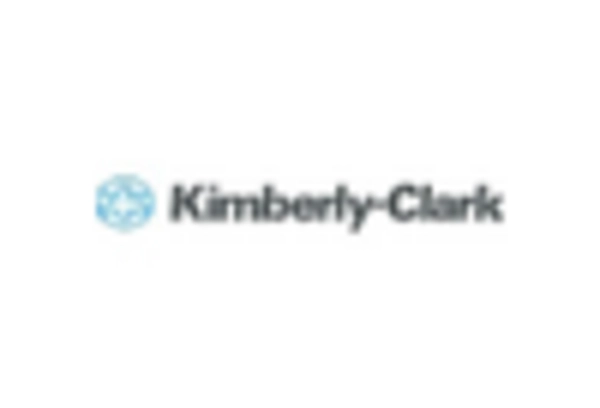

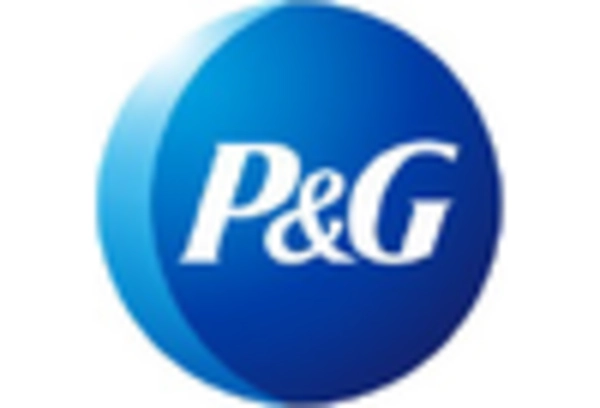









Leave a Comment